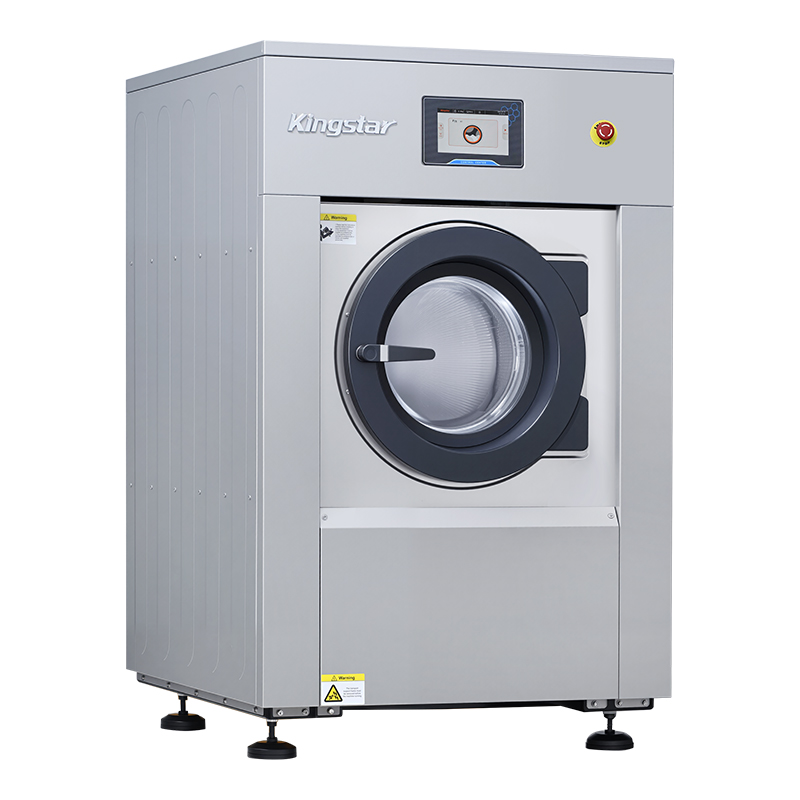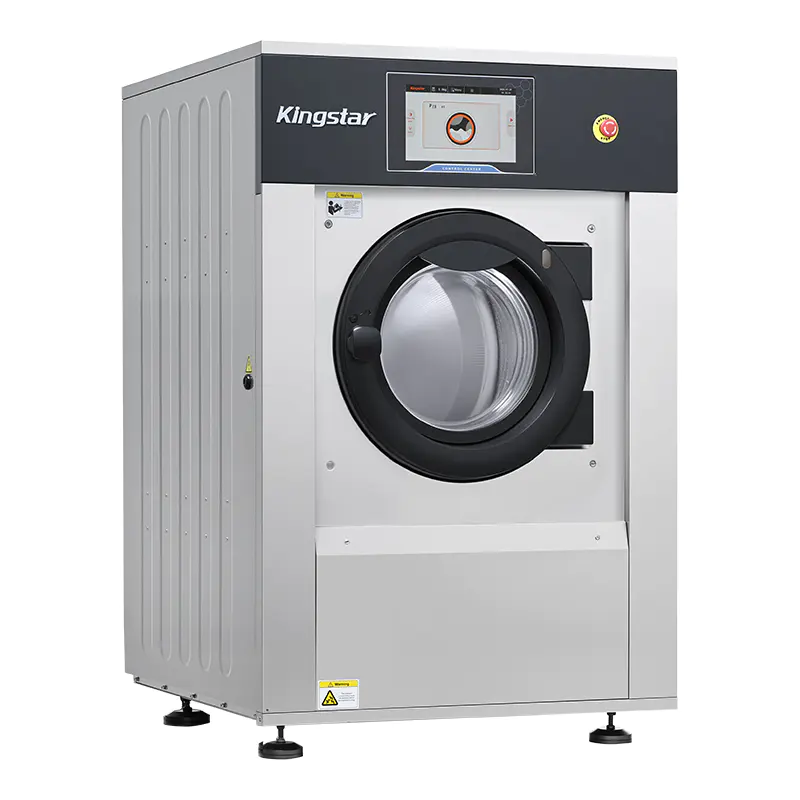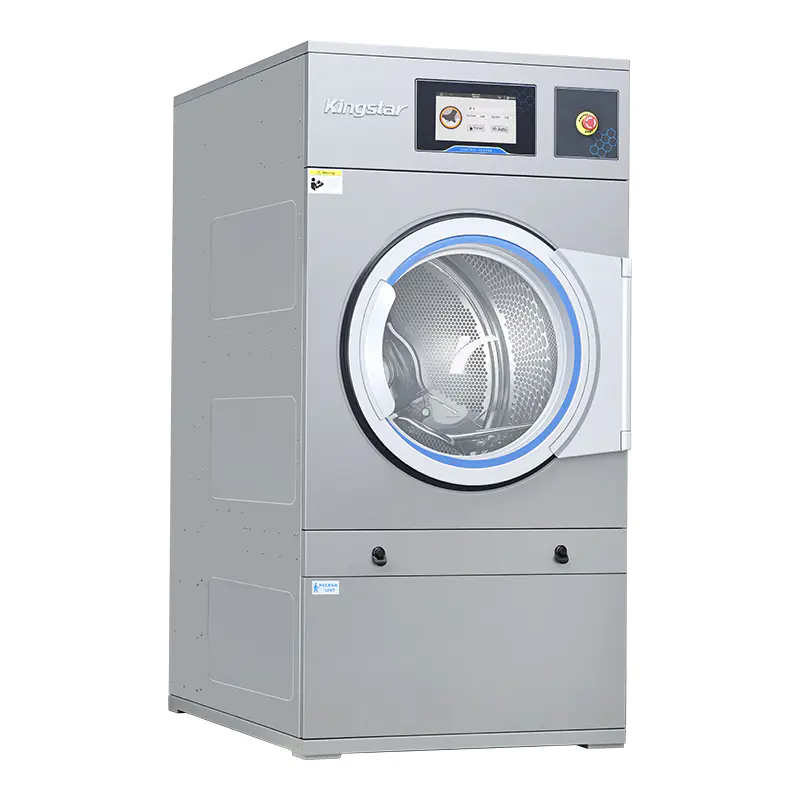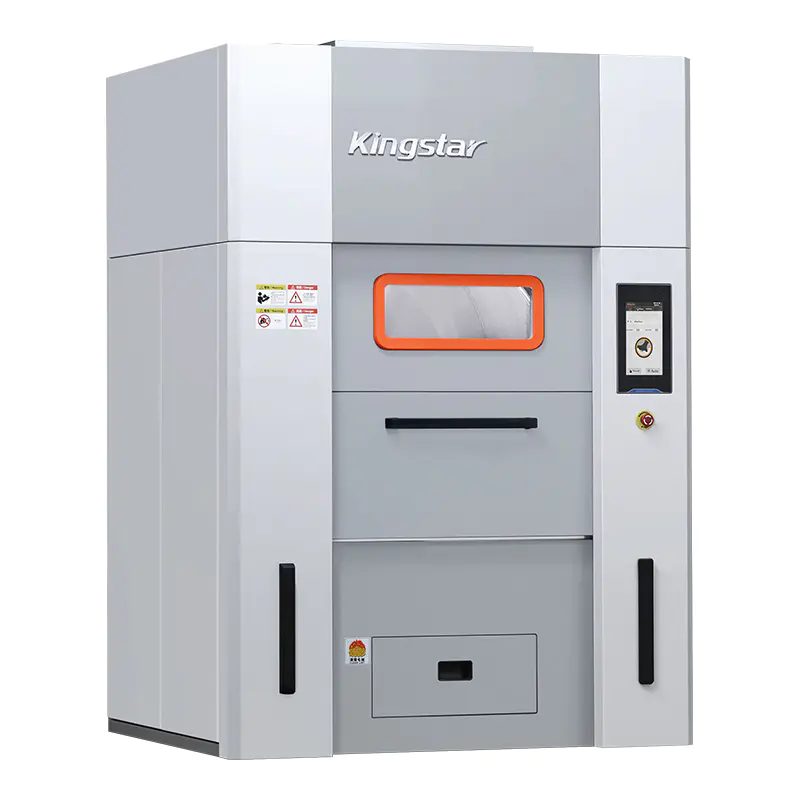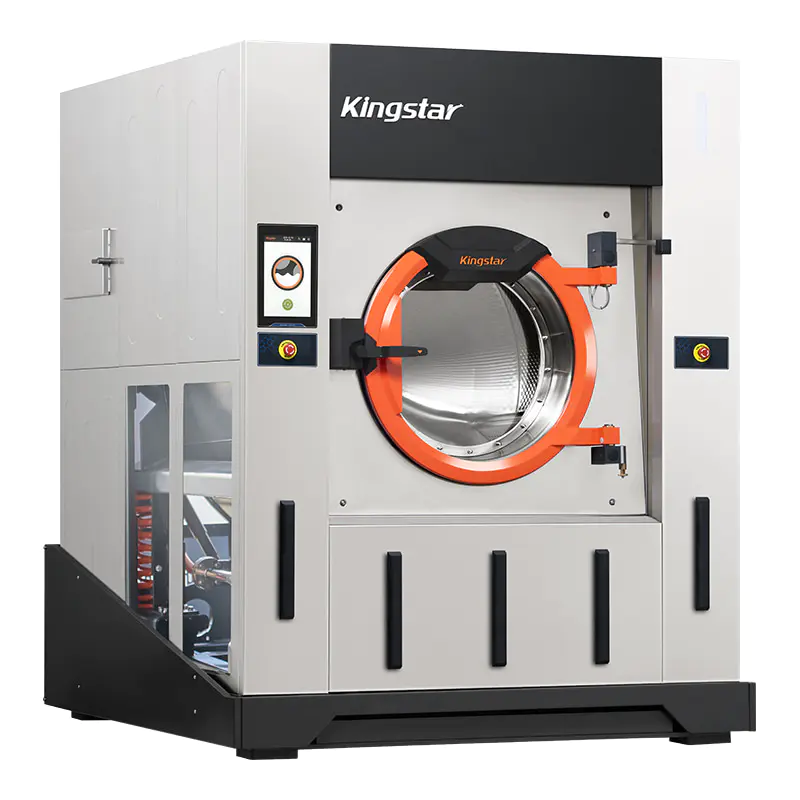
What factors should be considered when selecting the capacity of an industrial washer extractor?
Laundry demand at the place of use
When choosing the capacity of an industrial washer extractor, the actual washing demand should be evaluated first. The 40kg capacity is suitable for places such as small and medium-sized hotels, nursing homes, and small laundries where the daily laundry does not exceed 300 kg; 60kg is suitable for medium-sized hotels, hospital departments, unit logistics, and other units that have stable washing tasks every day but do not belong to high-frequency assembly lines; and 100kg capacity is usually used in professional washing plants, large hospital laundry centers, linen centralized washing companies, etc., which handle a large number of linens, quilts, uniforms, etc. every day. Understanding the unit's daily linen replacement frequency, type and weight is the premise for reasonable selection.
Equipment use frequency and work intensity
Equipment of different capacities also has different carrying capacities in terms of working frequency. A 40kg washing machine is more suitable for scenarios where it is used for no more than 5 to 6 hours a day, while 60kg and 100kg equipment are more suitable for places with continuous operation and high-frequency batch processing. If the equipment needs to run continuously for 8 hours or even longer, 60kg or 100kg models should be given priority to reduce equipment wear and extend service life. In addition, it is also necessary to pay attention to whether there are concentrated washing peaks, such as hotel check-out time or after shift handover in the hospital, which may determine the required capacity.
Site space and installation conditions
As the capacity of industrial washer extractors increases, the volume and weight also increase accordingly. 40kg models generally occupy a small area and are suitable for laundries with limited space; 60kg models occupy medium space and are suitable for most medium-sized logistics units; 100kg equipment requires a larger site and sufficient load-bearing foundation, and some models also require additional shock-absorbing foundations. Before purchasing, you should confirm whether the water, electricity, drainage, and exhaust conditions match the selected capacity, and evaluate whether the site can meet the installation requirements and daily operation space.
Matching of water and electricity resources
There are large differences in water and electricity consumption for industrial washer extractors of different capacities. 40kg equipment generally uses ordinary power to meet the requirements, while most 100kg equipment uses three-phase electricity, which requires the unit to have industrial power access conditions; in terms of water use, the single water consumption of 100kg models is much higher than that of small-capacity equipment, and it is necessary to confirm whether the site water supply capacity and drainage pipe diameter meet the needs. If water and electricity resources are tight, you should carefully choose large-capacity equipment, or consider running in batches to reduce the operating load.
Types and materials of laundry items
When choosing capacity, you also need to consider the type of laundry items. For example, bath centers, hotels, etc. mainly use towels and sheets, and linens are easy to stack. 40~60kg models can meet regular needs; but if the unit involves washing heavy fabrics (such as bathrobes, work clothes, floor mats, curtains, etc.), it is recommended to configure 60kg or 100kg equipment to prevent overload or insufficient dehydration due to the concentrated weight of linens. When the types of clothing are more diverse, you can flexibly handle them by matching equipment with different capacities to improve work efficiency.
Cost budget and long-term use planning
The equipment procurement cost is proportional to the capacity, and the operating cost (such as electricity, water, and labor) also increases with the increase in capacity. If the unit plans to use the laundry equipment for a long time and stably, it should comprehensively consider the purchase cost, operation and maintenance cost, and later parts replacement cost. For units with small demand, it is more economical to choose models of 60kg and below; for laundry factories with large output and high labor costs, although large-capacity equipment has a large initial investment, it can reduce the overall cost in long-term use by reducing shifts and labor input.
Coordination with other laundry process equipment
Industrial laundry equipment is often used in conjunction with dryers, ironing machines, folding machines, etc. The equipment capacity should match other process equipment. For example: if the washing machine is 100kg and the dryer capacity is only 50kg, it may lead to insufficient processing capacity in the subsequent process and form a process bottleneck. Therefore, when choosing the capacity of the washing machine, it should not be considered in isolation, but the matching degree of the equipment in the entire laundry system should be evaluated to improve the overall operating efficiency and the turnover speed of the linens.
Scalability and future demand changes
The unit should also reserve a certain amount of redundant space when selecting. If the business volume is expected to increase in the future (such as adding beds and expanding the business scope), it is recommended to appropriately increase the equipment capacity based on the current demand. For example, if a hotel that originally only needs a 40kg model plans to add floors, it can consider directly equipping a 60kg model to reduce the additional costs of repeated purchases and adjustments to equipment in the future.
Operators and management capabilities match
The larger the capacity, the higher the operation and management requirements. 100kg models usually require professional operators to master standard operating procedures and safety regulations; while 40kg models are relatively simple to operate, and general employees can get started after short-term training. If the unit's operators have high mobility or limited technical level, ease of operation and safety should be considered comprehensively to avoid increased failure rates or hidden dangers caused by misoperation due to complex equipment operation.
Safety and post-maintenance factors
Large-capacity industrial washer extractors generate large inertia and noise during operation, and have higher requirements for site structure, noise control and safety management. In terms of maintenance, large-capacity models rely more on professional after-sales teams for inspection and maintenance, especially key components such as bearings, transmission systems, and shock-absorbing structures. When choosing, the manufacturer's after-sales service capabilities should be combined to ensure that the subsequent maintenance is timely and reliable.
ADD:No.388 Xinggang Road, Chongchuan District, Nantong City, 226000, Jiangsu Province, China.
-
Phone: +86-13917089379
-
Tel:+86-13917089379
-
Fax:+86-0513-85663366
-
E-mail:[email protected]
